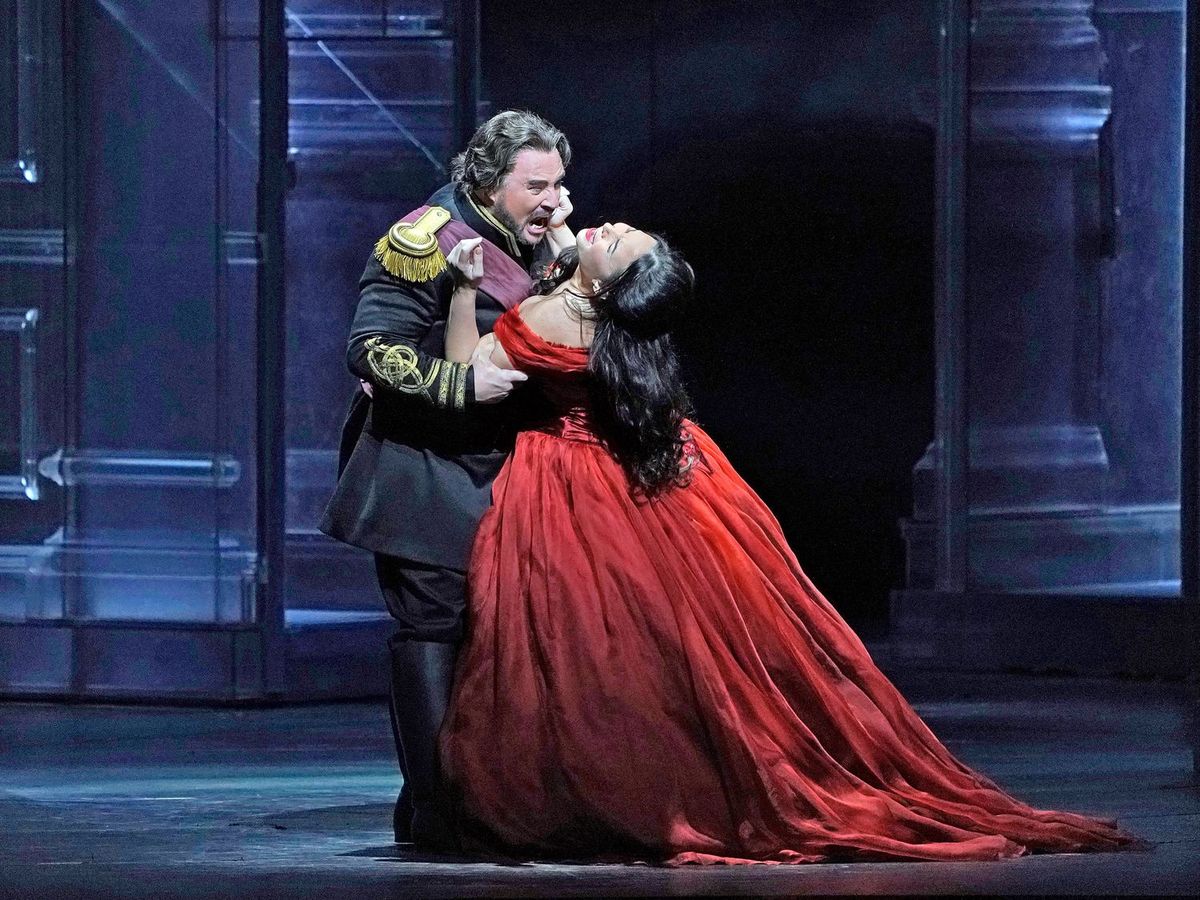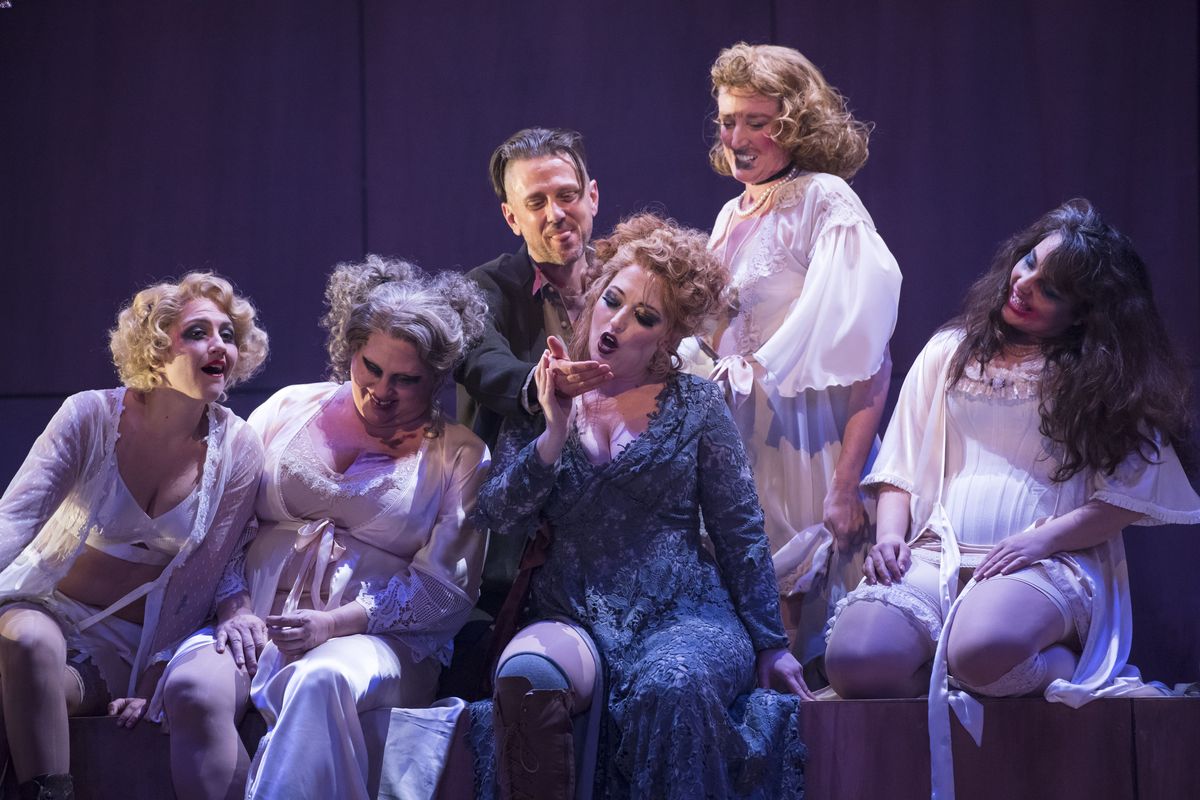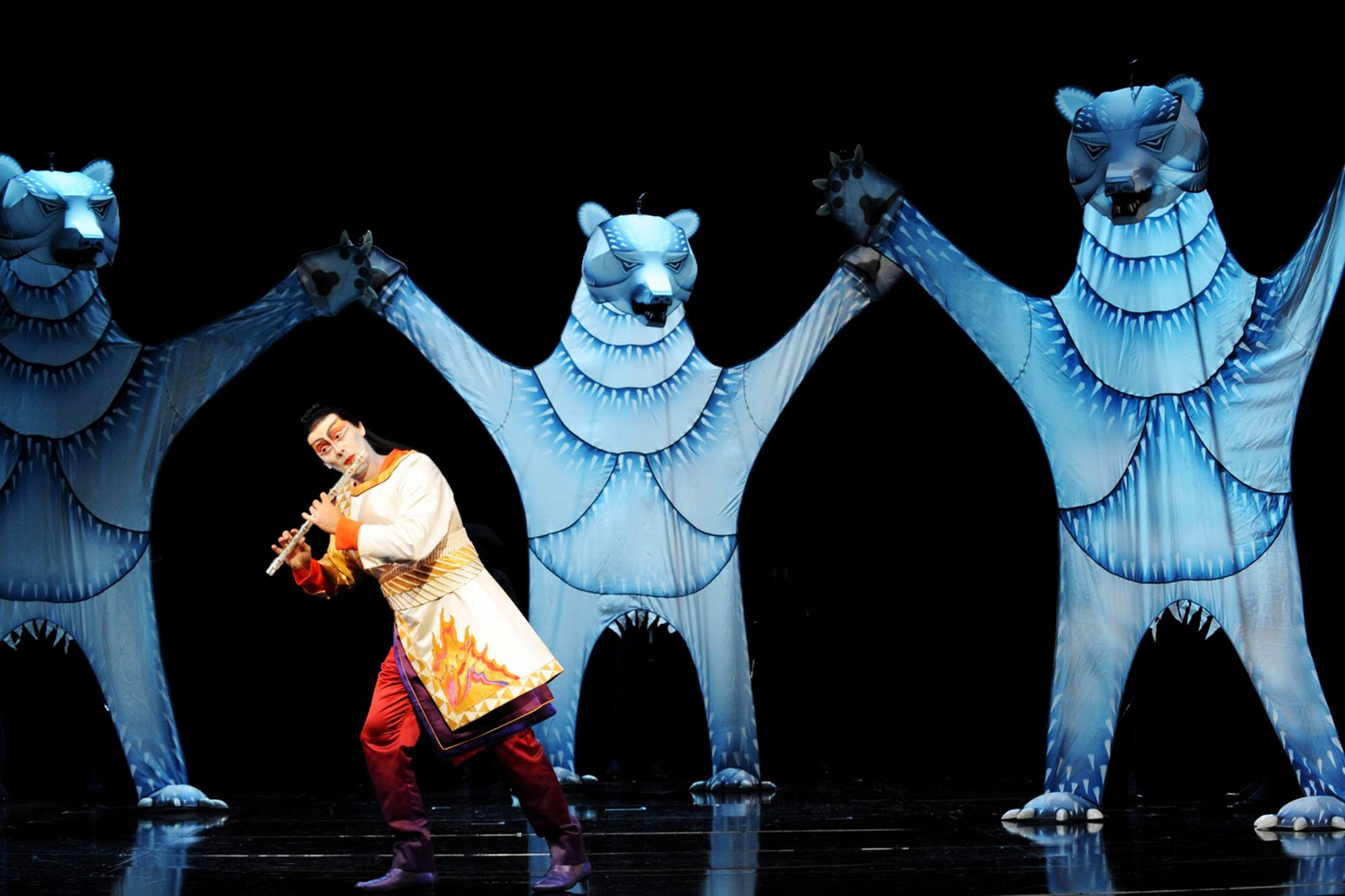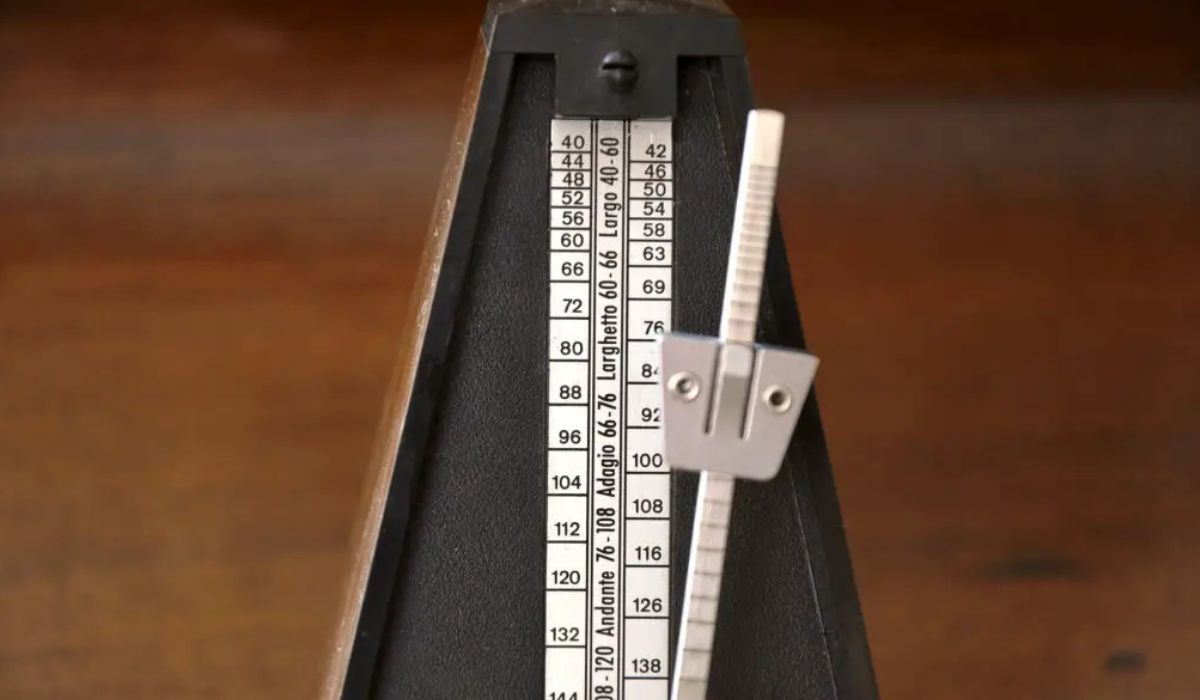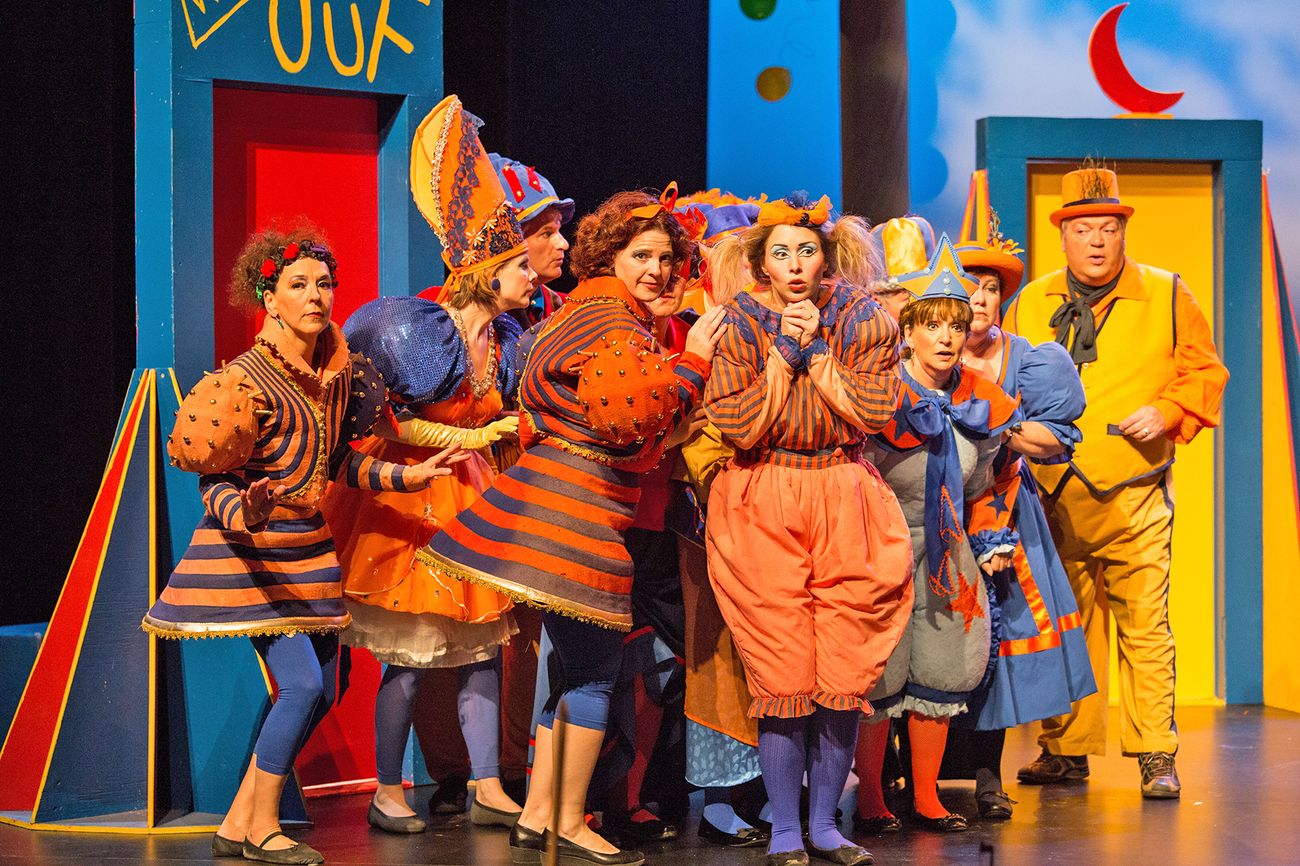Home>Events & Info>Opera>How Long Is Lohengrin Opera


Opera
How Long Is Lohengrin Opera
Published: January 5, 2024
Discover the duration of Lohengrin opera and immerse yourself in the enchanting world of this captivating piece. Uncover the length of this iconic opera.
(Many of the links in this article redirect to a specific reviewed product. Your purchase of these products through affiliate links helps to generate commission for AudioLover.com, at no extra cost. Learn more)
Table of Contents
Introduction
Welcome to the enchanting world of opera, where music and storytelling come together to create unforgettable experiences. In this article, we delve into the captivating opera known as “Lohengrin” and explore the intriguing question: how long is Lohengrin opera?
Lohengrin is a renowned opera composed by Richard Wagner, a German composer widely regarded as one of the most influential figures in Western classical music. First performed in 1850, Lohengrin has stood the test of time, captivating audiences with its beautiful music and compelling plot.
The opera tells the tale of a knight named Lohengrin, who arrives in the kingdom of Brabant to aid its princess, Elsa, in a time of crisis. What follows is a story of love, betrayal, and the power of faith. Lohengrin is filled with melodious arias, sweeping orchestral compositions, and powerful choral moments, making it a true masterpiece of the operatic world.
Before we delve into the specifics of Lohengrin’s length, let’s understand a bit about the background and synopsis of the opera. This will give us a better context for appreciating the significance of its duration.
Background of Lohengrin Opera
Lohengrin was composed by Richard Wagner and premiered at the Hofoper in Weimar, Germany, on 28 August 1850. Wagner wrote both the music and the libretto, drawing inspiration from Germanic myths and legends.
At the time of its creation, Wagner was influenced by the Romantic Movement, which emphasized themes of love, heroism, and the supernatural. Lohengrin reflects these themes, as it tells a story that combines elements of medieval chivalry, mythology, and divine intervention.
The opera takes place in the mythical kingdom of Brabant and centers around Princess Elsa, who is accused of murdering her brother in order to gain power. In a desperate plea, Elsa summons a knight to defend her honor. This is where Lohengrin enters the picture, arriving on a swan-drawn boat to win Elsa’s trust and fight on her behalf.
Wagner was known for his innovative approach to opera, and Lohengrin is no exception. It features Wagner’s signature use of leitmotifs, which are recurring musical themes associated with specific characters, places, or ideas. This technique adds a rich layer of depth to the storytelling, allowing the music to convey emotions and motifs that enhance the audience’s understanding of the narrative.
Furthermore, Lohengrin showcases Wagner’s mastery of orchestration. The opera blends powerful orchestral textures with delicate vocal passages, creating an atmosphere that can be both grand and intimate. This skillful balance between the vocal and instrumental elements is a hallmark of Wagner’s compositional style.
With its enchanting music and mythical storyline, Lohengrin quickly gained popularity after its premiere. It has since become one of Wagner’s most performed operas, captivating audiences around the world with its timeless appeal.
Now that we understand the background of Lohengrin, let us explore the synopsis of the opera to gain further insight into its intriguing narrative.
Synopsis of Lohengrin Opera
Lohengrin is a four-act opera that tells a captivating story filled with love, betrayal, and mystery. Set in the mythical kingdom of Brabant, the opera unfolds through a series of dramatic events and emotional encounters.
Act 1 introduces Elsa, the Princess of Brabant, who is falsely accused of murdering her brother Gottfried. As the trial begins, she awaits help from a knight who will come to her defense. Suddenly, a mystical swan-drawn boat arrives, and Lohengrin, the Knight of the Holy Grail, steps out to aid Elsa.
Lohengrin agrees to assist Elsa, but on one condition: she must never ask his name or his origin. Elsa gladly accepts, and they fall deeply in love. However, Elsa’s doubts and curiosity begin to grow, and she cannot resist delving into Lohengrin’s mysterious past.
In Act 2, we witness the love and devotion between Elsa and Lohengrin blossoming. They exchange vows and celebrate their union, surrounded by the joyous festivities of a wedding ceremony. However, trouble looms as Elsa’s scheming antagonist, Telramund, plots to overthrow Lohengrin and claim the throne for himself.
Act 3 brings tension and conflict as Telramund challenges Lohengrin to a duel. Lohengrin emerges victorious, but his true identity and purpose are at risk of being exposed. Elsa’s curiosity overwhelms her, and she finally succumbs to temptation, breaking her promise by demanding answers from Lohengrin.
Lohengrin, devastated by Elsa’s betrayal, reveals that he is a knight of the Holy Grail, sent to protect Elsa and Brabant. When his true identity is revealed, Elsa’s brother, Gottfried, mysteriously returns to life, proving her innocence. In a powerful moment, Lohengrin bids farewell to Elsa and departs on the swan-drawn boat, leaving behind a heartbroken Elsa and an enlightened kingdom.
The final act portrays the consequences of Elsa’s inquisitiveness. The kingdom of Brabant is left in disarray, and Elsa, filled with remorse, dies of a broken heart. Lohengrin’s departure signifies the end of the magical era he brought with him.
The synopsis of Lohengrin provides just a glimpse into the richness and complexity of the opera’s storyline. It is a tale that explores the depths of human emotions, the consequences of curiosity, and the power of faith and love. As we dive deeper into understanding the duration of Lohengrin, it is important to grasp the significance of this opera in the world of classical music.
Duration of Lohengrin Performances
When it comes to the duration of Lohengrin performances, it is important to note that the exact length can vary depending on multiple factors, including the production, conductor, and interpretation. However, on average, Lohengrin has a running time of approximately four to five hours, including intermissions.
Each of the four acts of Lohengrin tends to have a varying duration, with the first act typically being the longest. It sets the stage for the story, introduces the main characters, and establishes the dramatic tension. The second and third acts delve deeper into the relationships, conflicts, and plot developments, while the final act brings resolution and closure to the opera’s narrative.
It is worth mentioning that some productions may choose to make cuts or adaptations to shorten the overall duration of the opera. These cuts are often made to remove repetitive musical passages or to streamline the storyline. However, such modifications might not always be well-received by purists who value the entirety of Wagner’s composition.
Additionally, the tempo and pacing of the performance can affect the overall duration. The conductor’s interpretation and the energy brought by the performers can influence the speed at which the music is played and the pacing of the scenes. An intense and fast-paced performance may shorten the duration, while a more leisurely and deliberate interpretation can extend the length of the opera.
Another factor that can impact the duration is the inclusion of extended or additional musical passages. Some conductors may choose to include optional pieces, such as Wagner’s orchestral prelude or interludes, which can add to the overall runtime of the opera.
Ultimately, the duration of Lohengrin performances can vary, but it is safe to expect a substantial time commitment when attending a live production or listening to a recording. However, the immersive and captivating nature of the opera ensures that the time spent experiencing Lohengrin is well worth it.
Now that we understand the duration of Lohengrin performances, let’s explore the factors that can influence the length of this opera.
Factors Affecting the Length of Lohengrin Opera
Several factors can influence the length of Lohengrin opera performances, contributing to variations in runtime. These factors include the edition being performed, the conductor’s interpretation, the production’s artistic choices, and the pacing of the performers.
1. Edition: Different editions of Lohengrin exist, with variations in the score and libretto. Some editions may include additional musical passages or extended scenes that can lengthen the opera’s overall duration. The choice of edition by the production team can impact the runtime of the performance.
2. Conductor’s Interpretation: The conductor plays a crucial role in shaping the performance. They have the freedom to set the tempo and pace of the music, which can influence the overall duration. A conductor who takes a slower, more deliberate approach may extend the runtime, while a conductor with a brisker tempo may shorten it.
3. Artistic Choices: Productions of Lohengrin often incorporate directorial and artistic choices that can affect the length of the opera. These choices can include the addition or removal of scenes, alterations to the staging, or the inclusion of dance sequences. Such modifications can impact the overall duration of the performance.
4. Pacing of the Performers: The pacing at which the performers execute their roles can also influence the length of the opera. Slower and more reflective interpretations of the music, as well as extended pauses or moments of silence, can elongate the runtime. Conversely, a more energetic and brisk performance style may result in a shorter duration.
It is essential to remember that while variations in runtime may exist, each production strives to maintain the integrity and essence of Wagner’s original vision. The collective artistic decisions made by the production team aim to create a cohesive and engaging performance while respecting the fundamental elements of the opera.
Ultimately, regardless of the specific factors at play, the duration of Lohengrin is carefully balanced to ensure that audiences remain captivated and immersed in the story. Whether it is a slightly shorter or longer performance, the beauty and grandeur of Wagner’s music continue to shine through, making each rendition a unique and unforgettable experience.
With an understanding of the factors that affect the length of Lohengrin, let us explore the significance of its duration in the realm of opera.
Significance of Lohengrin’s Length
The length of Lohengrin holds significant importance in the world of opera, contributing to the overall impact and experience of the work. Its duration allows for a comprehensive exploration of the intricate plot, complex characters, and the emotional depth conveyed through Wagner’s music.
First and foremost, the extended runtime of Lohengrin enables the audience to fully immerse themselves in the story. Wagner’s operas are known for their epic scale and sweeping narratives, and Lohengrin is no exception. The duration gives ample time for the audience to connect with the characters, understand their motivations, and become emotionally invested in their journey.
Moreover, the length of Lohengrin allows for the development of musical themes and motifs that are central to Wagner’s compositional style. The opera is filled with leitmotifs, recurring musical themes associated with specific characters, places, or ideas. Wagner uses these leitmotifs to deepen the emotional impact of the story and create a cohesive musical structure. The extended duration provides the space and time necessary for these motifs to be introduced, developed, and interwoven throughout the opera.
Additionally, the length of Lohengrin provides room for monumental and climactic moments to unfold. The opera builds tension and anticipation, culminating in powerful scenes of confrontation, revelation, and resolution. These moments of heightened drama and musical intensity are best appreciated in the context of the opera’s full duration, allowing the audience to experience the full impact of Wagner’s grand vision.
Furthermore, the length of Lohengrin reflects the commitment and dedication required of the performers. Singers must possess the vocal stamina and acting prowess to sustain their roles through an extended performance. This challenge adds to the prestige and artistic accomplishment associated with Lohengrin, attracting accomplished singers who relish the opportunity to showcase their talents in such a demanding work.
Finally, the duration of Lohengrin contributes to its status as an immersive and transformative experience for the audience. Wagner’s operas were intended to transport audiences into a different realm, where time and reality are transcended. The length of Lohengrin supports this transformative quality, allowing viewers to be fully absorbed in the world of the opera and to be transported on an emotional and intellectual journey.
Ultimately, the length of Lohengrin plays a vital role in capturing the grandeur, depth, and emotional resonance of Wagner’s vision. As the audience embarks on the opera’s four- to five-hour journey, they are rewarded with a transformative experience that not only entertains but also inspires and enriches their understanding of the human condition.
With an appreciation for the significance of Lohengrin’s duration, we can now conclude our exploration of this captivating opera.
Conclusion
Lohengrin is an extraordinary opera that takes audiences on a journey of love, betrayal, and self-discovery. Throughout the article, we have explored the question of how long Lohengrin opera is and delved into the various aspects that contribute to its duration.
From the background of Lohengrin’s composition by Richard Wagner to the captivating synopsis of the opera, we have gained a deeper understanding of its significance in the world of classical music. The duration of Lohengrin performances, typically spanning four to five hours, allows for a complete immersion in Wagner’s rich storytelling and breathtaking music.
We have also discussed the factors that can influence the length of Lohengrin, such as the edition being performed, the conductor’s interpretation, artistic choices, and the pacing of the performers. These factors contribute to the unique iterations of the opera while maintaining the essence of Wagner’s original vision.
Furthermore, we have explored the significance of Lohengrin’s duration in creating an immersive and transformative experience for both performers and audiences alike. The extended runtime provides the opportunity to fully engage with the characters, appreciate the development of musical motifs, and experience the climactic moments that make Lohengrin a true masterpiece.
As we conclude our exploration of Lohengrin’s length, we are reminded of the enduring impact this opera has had on the world of opera and classical music. Its depth, complexity, and emotional resonance continue to captivate audiences, making each performance a unique and remarkable experience.
Whether attending a live performance or listening to a recording, immersing oneself in the enchanting world of Lohengrin is a transcendental journey that allows us to appreciate the power of music, storytelling, and the human spirit.
So, next time you find yourself curious about the duration of Lohengrin opera, remember that it is a journey worth undertaking. Prepare to be swept away by the beauty of the music, the brilliance of the performances, and the timeless tale that continues to resonate with audiences around the world.
Let Lohengrin’s allure take you on a remarkable adventure, where time stands still, and the magic of opera unfolds before your very eyes and ears.

